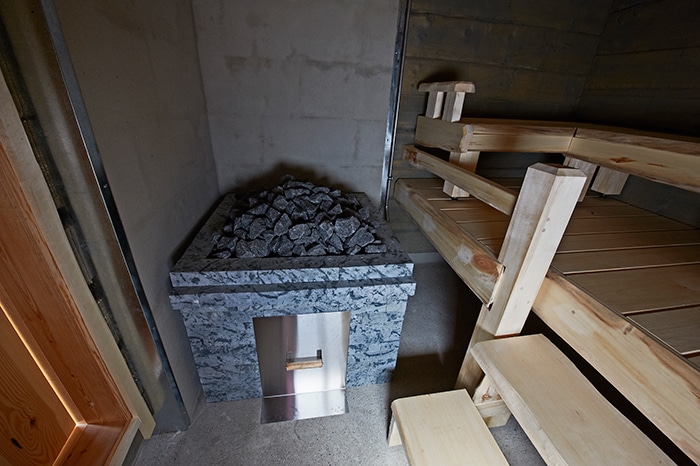Comprehensive guide: how to choose the right materials for sauna ceilings
The sauna is the heart of the Finnish home, a place to relax...
Read moreFinns take different kinds of sauna: a smoke sauna, a sauna in a private house or even a sauna in a public swimming pool. What differences do we recognise and what do we like about them?
The temperature in Finnish smoke saunas in the 20th century was approximately 60-70 degrees Celsius. Washing took place in the same room, i.e. there was no separate washing area. A lot of time was set aside for sauna bathing, preferably at least half an hour.
Since the wars, sauna temperatures have risen significantly and sauna time has been shortened. The heater has been replaced by a continuous or electric heater, and the washing facilities are usually located outside the actual sauna. High temperatures (80 – 100 degrees Celsius) provide hot and dry baths. In this type of sauna, chilling between baths is part of the ‘sauna etiquette’.
Now the “right temperature” has stabilised at 75-85 degrees Celsius. This is generally considered comfortable and most similar to the old image of the Finnish way of sauna bathing.
How do different heating solutions try to create this Finnish sauna experience, which has been praised as the best in the world?
The starting point is a smoke sauna stove: a large mass of rock is heated to such a temperature that the soot burns and the sting disappears. The stove is left to simmer for several hours, allowing the temperature of the surface stones to drop. The water evaporates slowly in the surface rocks and quickly in the really hot rocks below. The result is a long-lasting and intensifying lava flow. The smoke sauna experience is complemented by a fragrance and space that other sauna and heater solutions have not been able to replace.

The closest I can think of is the post-war “barrel stoves” and the stove manufacturer Narvin Aitokiuka, which are single-fired and chimney-connected. In these solutions, too, the stones are heated to red hot to remove soot. The stoves’ metallic shell and chimney cover help keep the stove ready for use for hours. These stoves provide either a sparkling or gentle fire.
In the Instant and Always Ready solutions for electric stoves, the outer casing of the stove covers the entire stone space, as in the “barrel stoves” or Aitoki stoves. The space does not heat up to the internal temperature of a normal sauna, i.e. about 75-85°C, unless the stove door is kept open before taking a sauna. Because the temperature in the sauna remains relatively low, the sauna is low-temperature and humid.
In 21st century tower/column stoves, a large mass of rock gives a slow, long-lasting steam from the surface rocks, and a fast steam from deeper down. The low temperature of the stove’s surface stones keeps the temperature in the sauna room comfortable, and the saunas can be sat quite close to the stove. The roughness and size of the stove evokes the atmosphere of a smoke sauna.
The amount of stones in the stove is crucial for the results. A small amount of stones in the stove requires a high temperature, otherwise the stove will freeze in the middle of the fire. The fire will come on without delay and disappear quickly. In saunas with small stoves, the sauna time is short and the steam is hot.
Product development by stove manufacturers has resulted in a wide range of stoves suitable for different spaces. The best stoves are those with a sufficiently large amount of stones. The low temperature of the surface stones is more pleasant on the skin and the strokes are more long-lasting.
Raimo Huusko, Managing Director
17.04.2014